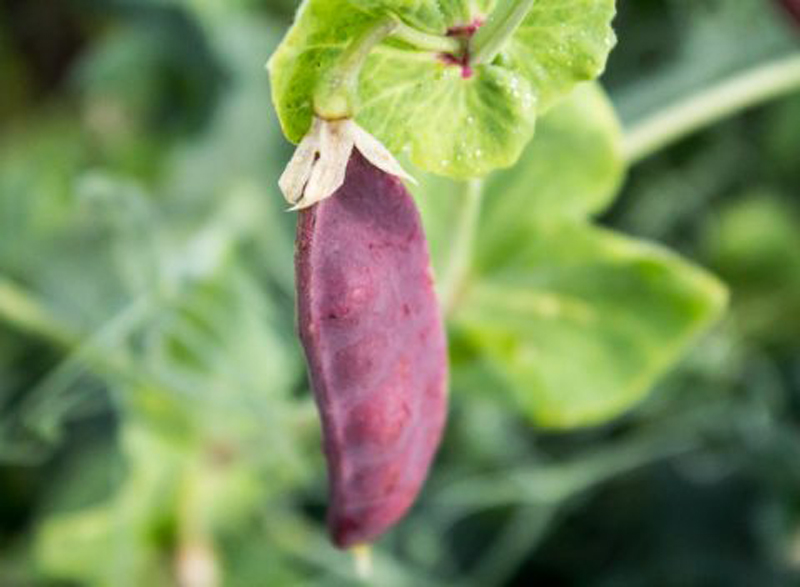He was buried with a face mask made from over 20 pounds of pure gold. But poor King Tut had an overbite and a club foot (he was buried with 130 walking sticks and he wore orthopedic sandals). He also suffered from Kohler’s disease. Worse, King Tut's parents were brother and sister.
Along with the rumors of curses, King Tut gave us one of the most interesting peas to grow, an heirloom variety - the King Tut Garden Pea (Pisum sativum). This rare garden pea was supposedly found in King Tut's tomb and the peas sprouted after thousands of years. This probably is not true, but a good story is a good story.
King Tut pea vines climb up to six feet tall, and are covered with stunning pink-and-purple flowers. The flowers give way to blue pods that are so dark they are nearly black. The large blue pods contain anywhere from four to six peas. You can pick the pods young and eat the peas steamed with mint or butter. If you wait, the peas will dry up and can be stored as soup peas.
Plant King Tut peas as early in the year as you can work the soil. Light frosts won’t hurt them. Sow seeds one inch deep, six inches apart in rows two feet apart. Seeds should germinate in six days to two weeks.
Peas grow best in full sun in rich, well-drained soil. Dig compost into the garden bed several weeks before planting. Birds will eat pea seeds and young plants, so you may need to protect the seeds by placing chicken wire or garden netting over the rows. You can remove this netting after a few weeks.
Pole peas such as King Tut grow tendrils that wrap around supports and let the peas climb.
Put up strong wire netting, or just use upright twiggy branches for the peas to cling to.
You can greatly increase yields by treating pea seeds with an inoculant with rhizobium bacteria.
Soup peas grow best in cool northern climates, in slightly acidic to neutral soil with a pH from 5.5 to 7.0.
Pea plants are good for the soil because they fix nitrogen from the air and convert it to nitrogen fertilizer.
Peas are susceptible to several fungal diseases that can weaken the plants or even kill them. Keep lots of open space around your pea plants so that air circulates well and keeps diseases away.
Use mulch around the base of the plants to hold in soil moisture, cut back on weeds, and importantly to form a barrier that discourages soil-borne diseases.
When your King Tut peas begin to bloom, water thoroughly once a week.
Never feed peas with nitrogen-rich fertilizers, because this will encourage lots of green leafy growth and few pea pods.
Along with all of the treasures from King Tut's tomb is his simple wooden chariot. When the 3,000-year-old chariot was shipped to New York it was listed as a vehicle, and officials held up its entry because it didn't have a vehicle identification number. I guess even pharaohs get stuck in customs.
Plant King Tut peas and you will have stunningly beautiful two-toned flowers followed by purple-podded peas you can either eat fresh or let dry for soups. You will also be growing food to store, peas that can keep perhaps for thousands of years.
























































